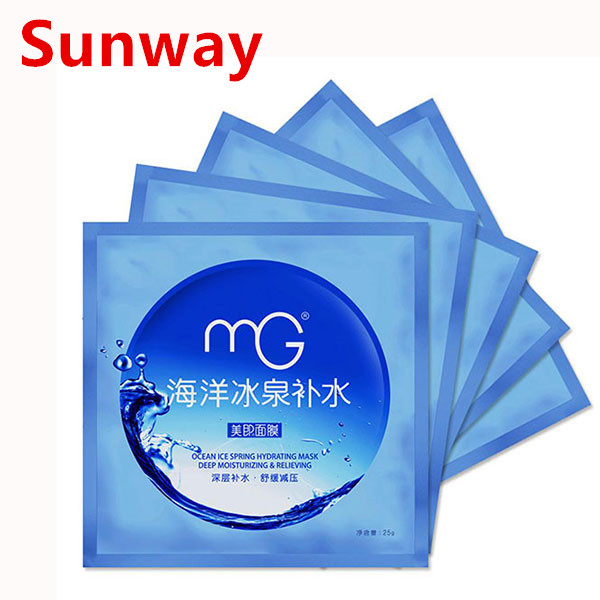Shigella Elisa Kit Instructions This kit is for research use only.
96T
purpose of usage:
This kit is used to determine the expression of Shigella in human serum, plasma and related liquid samples.
Experimental principle of human Shigella (Shigella) Elisa kit instructions This kit uses the double antibody sandwich method to determine the expression of human Shigella (Shigella) in specimens. The microplate is coated with purified human Shigella antibody to make a solid phase antibody, which can be combined with Shigella in the sample. After washing to remove unbound antigen and other components, It is combined with HRP-labeled Shigella antibody to form an antibody-antigen-enzyme-labeled antibody complex. After thorough washing, the substrate TMB is added for color development. TMB is converted into blue under the catalysis of HRP enzyme, and into the final yellow under the action of acid. Measure the absorbance (OD) at 450nm with a microplate reader
Value), compared with the CUTOFF value to determine the presence or absence of Shigella in the specimen.
Kit composition
1 30 times concentrated washing solution 20ml × 1 bottle 7 stop solution 6ml × 1 bottle
2 Enzyme label reagent 6ml × 1 bottle 8 Positive control 0.5ml × 1 bottle
3 Enzyme label coated plate 12 well × 8 strips 9 negative control 0.5ml × 1 bottle
4 Sample diluent 6ml × 1 bottle 10 instructions 1 copy
5 Developer A solution 6ml × 1 bottle 11 2 sealing film
6 Developer B solution 6ml × 1 / bottle 12 sealed bag 1 specimen requirement
1. Specimens are extracted as soon as possible after collection, and extraction is performed according to relevant literature, and experiments should be conducted as soon as possible after extraction. If the test cannot be performed immediately, the specimen can be stored at -20 ℃, but repeated freezing and thawing should be avoided
2. Samples containing NaN3 cannot be detected because NaN3 inhibits horseradish peroxidase (HRP) activity.
Steps
1. Numbering: The microwells corresponding to the samples are numbered in order. Each plate should be set with 2 wells for negative control, 2 wells for positive control, and 1 blank control.
Wells (the blank control wells do not add samples and enzyme reagents, the remaining steps are the same)
2. Add sample: add negative control and positive control 50μl to the negative and positive control wells respectively. Then add 40μl of sample diluent to the sample well, and then add 10μl of the sample to be tested. Add the sample to the bottom of the well of the microplate, try not to touch the wall of the well, gently shake to mix,
3. Incubation: seal the plate with the sealing film and incubate at 37 ° C for 30 minutes.
4. Mixing solution: Dilute 30 times concentrated washing liquid with distilled water 30 times and reserve
5. Washing: Carefully peel off the sealing film, discard the liquid, spin dry, fill each well with the washing liquid, let it stand for 30 seconds, then discard, repeat 5 times and pat dry.
6. Add enzyme: add 50μl of enzyme label reagent to each well, except blank well.
7. Incubation: The operation is the same as 3.
8. Washing: The operation is the same as 5.
9. Color development: add 50μl of developer A to each well, and then add 50μl of developer B, mix gently, and develop color at 37 ℃ in the dark
15 minutes.
10. Termination: Add 50μl of stop solution to each well to stop the reaction (at this time the blue will turn to yellow).
11. Determination: Measure the absorbance (OD value) of each well in sequence with the blank air conditioner at zero and 450nm wavelength. The measurement should be carried out within 15 minutes after adding the stop solution.
Summary of operating procedures:
Calculation and result judgment:
Test effectiveness: the average of positive control wells ≥1.00; the average of negative control wells ≤0.10
Calculation of critical value (CUT OFF): critical value = average value of negative control wells + 0.15
Negative determination: Shigella negative for sample OD value <critical value (CUT OFF): Shigella positive for sample OD value ≥ critical value (CUT OFF).
Precautions
1. The operation is strictly in accordance with the instructions. The components of different batches of this reagent must not be mixed.
2. The kit should be taken out of the refrigerated environment and equilibrated at room temperature for 15-30 minutes before use. If the enzyme-coated plate is unsealed after opening, the strip should be stored in a sealed bag.
3. Crystals may be precipitated in the concentrated washing liquid, which can be heated and dissolved in a water bath during dilution, and the results will not be affected during washing.
4. The sealing film is limited to one-time use to avoid cross-contamination.
5. Please keep the substrate away from light.
6. The test results must be determined based on the reading of the microplate reader. When using dual wavelength detection, the reference wavelength is 630nm
7. All samples, washing liquids and various wastes should be treated as infectious agents. The stop solution is 2M sulfuric acid, you must pay attention to safety when using it.
Storage conditions and validity period
1. Kit storage :; 2-8 ℃.
2. Validity: 6 months Instructions for human Shigella Elisa kit
This Facial Mask Packaging Bag is made of food-grade material 100%, you can pack the cosmetic and facial mask safely, It is understood that the aluminum foil bag has good thermal sealing performance, softness and high barrier performance. the main feature is Strong air barrier, anti-oxidation, waterproof and moisture-proof; Strong mechanical performance, high blasting resistance and piercing resistance and tear resistance; Resistance to high temperature (121 ℃) and low temperature (- 50 ℃), oil resistant, good performance; Non-toxic and tasteless, meeting the hygienic standards of food and drug packaging.



Facial Mask Packaging Bag
Facial Mask Packaging Bag,Mask Bag,Mask Pouch,Facial Mask Bag
Shenzhen Sunway Packaging Material Co., Ltd , https://www.sunwaypack.com